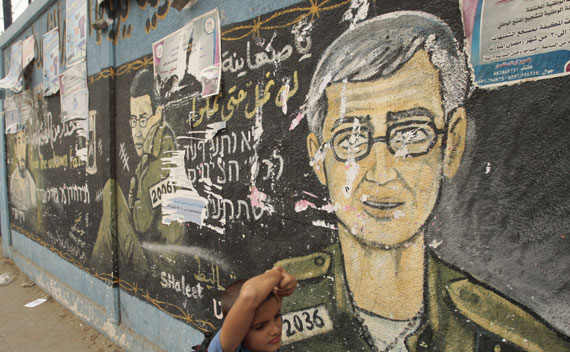Egypt, Hamas, and the Shalit Deal
More on:

It is hard to believe, but it has been five and a half years since Gilad Shalit was taken prisoner in Gaza. He is finally coming home in a deal that one of my Israeli friends called “problematic,” but nevertheless worthwhile to win Shalit’s release. Much of the commentary (at least, best that I can tell from Istanbul) has focused on how much of a win the deal is for the Netanyahu government and why Hamas agreed to release perhaps one of its most important bargaining chips.
I’ll leave it to my Israel-Palestine expert friends to get into the finer details of the agreement. I am most interested (surprise) in the Egyptian role. It remains unclear exactly how much influence Cairo had on Hamas, but the Egyptians facilitated the talks between the Israelis and Hamas representatives and a German mediator. Perhaps they weren’t much more than the caterer; yet, reading in between the lines, it seems that the Egyptian role was more than this. Could it be that Egypt is 2 for 2 in its post-Hosni Mubarak Palestine diplomacy? This would be quite an achievement for a country generally regarded to be in some state of disarray.
I would not want to discount the critical facts that Hamas—whose patrons in Damascus and Tehran are under pressure—and the Israelis needed an agreement, which was critical to getting a deal. Still, the fact that the Egyptian-Hamas relationship has evolved since Mubarak’s fall, no doubt, helped bring the parties along. Whereas the prime directive for Mubarak and his intelligence chief, Omar Suleiman, who controlled the Palestine-Israel file, was to do everything possible to undermine Hamas, Egyptian officials have now struck a more constructive tone. Evincing a willingness to work with Hamas to first bridge the divide between the Gazan and West Bank authorities (still a problem to be sure) and now resolve the Shalit issue seems to vindicate the argument that if you want to get anything done on the Palestine front, you have to deal with Hamas, like it or not. It also vindicates Egypt’s slowly changing foreign policy that is putting some daylight between Washington and Cairo on a number of issues. As I have written before, this divergence is the logical outcome of political processes that the downfall of Mubarak set in motion. For all the concern in Washington these days about the end of the strategic alignment between the United States and Egypt , there is an interesting—even tantalizing—possibility that some distance between the two countries might actually make Cairo a more appropriate interlocutor for Washington than it has been over the last 30 years.
N.B. For those of you who may not have noticed, my book The Struggle for Egypt: From Nasser to Tahrir Square is now out (please click on the title for the book’s webpage). You might be interested in the mini-documentary that I put together with the help of my talented colleagues from CFR’s Media department. Please click here: Egypt’s Democratic Quest: From Nasser to Tahrir Square. Please let me know what you think of both the book and the video.
More on:
 Online Store
Online Store